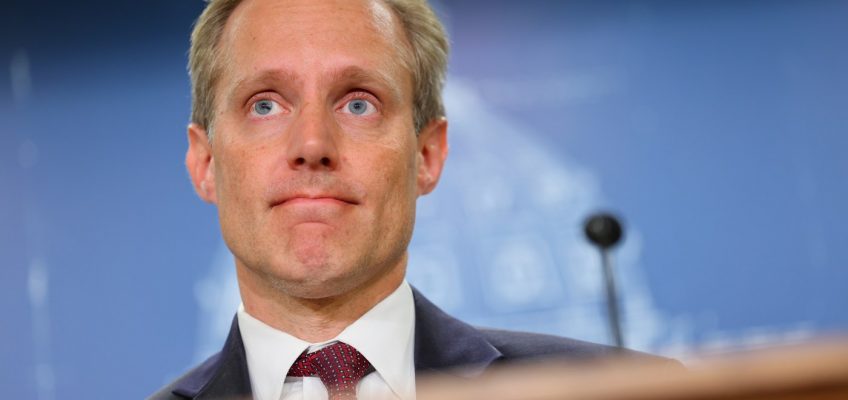As early voting starts this Friday in Minnesota, elections officials say they’ve improved the state’s new automatic voter registration system after a review discovered around 1,000 registrations that lacked proof of citizenship and addresses.
To the knowledge of state officials, none of those possibly ineligible voters cast ballots in the August primary election, Secretary of State Steve Simon said Thursday. The registrations flagged by the Department of Public Safety will be considered inactive until the personal information is verified.
“We were made aware this summer of a glitch,” Simon told reporters at the Capitol during a news conference. “There’s no evidence that anyone voted, which is a good thing, and it’s good that they caught that error when they did.”
In April, Minnesota started to automatically register people to vote when applying for or renewing driver’s licenses or state ID cards. The new system was passed by the Democratic-Farmer-Labor-controlled Legislature and signed into law by Democratic Gov. Tim Walz in 2023.
That same year they ended a two-decade ban on driver’s licenses for people in the U.S. illegally. Republican opponents of automatic voter registration said they were concerned that could lead to noncitizens getting registered to vote, though the automatic voter registration through ID applications requires proof of citizenship.
Vetting registrations
Still, the state’s public safety department found issues with the system and initiated a “hand check” of about 100,000 automatic registrations, according to Simon. About 1% lacked proof of information like address, name, and citizenship, the review found.
In response, DPS has changed its process for vetting automatic voter registrations after finding issues, and will now require “two sets of eyes” to review every record. Before just one employee would vet registrations.
In a statement on the issue last week, the Secretary of State’s Office said it was working with the Driver and Vehicle Services division of DPS to increase “training for all front-end workers who are classifying documents.”
Simon, a member of the DFL, noted Minnesota’s new automatic voter registration law requires strong scrutiny of records to ensure ineligible voters aren’t registered.
“The people of Minnesota have every right to expect that it’s airtight. And what I intend with our partners — to deliver is a system that’s airtight,” Simon said, telling reporters he’s confident the changes to the review process will ensure issues will be resolved ahead of the general election on Nov. 5.
Republicans press for results of review
Over the past few weeks, Republican Minnesota lawmakers had been pressing on DPS to release results of the review.
In a Thursday statement, Sen. Mark Koran, the North Branch Republican lead on the Senate Elections Committee, expressed appreciation for the state’s efforts to verify registrations and called for stronger vetting.
“I’m encouraged their prompt response and ability to adapt will lead to fruitful conversations next year about putting in place a uniform voter verification process for every voter registration,” he said.
Reports of issues with Minnesota’s automatic voter registration system come after Oregon transportation department officials reported 306 noncitizens had been registered to vote, according to the Associated Press. Two had voted in elections since 2021.
Early voting begins
Questions about Minnesota’s automatic voter registration system come as early voting begins.
As of Friday Minnesotans can begin voting via absentee ballots or in person.
The deadline to preregister to vote in Minnesota is Oct. 15, but same-day registration is also available at the polls.
More information on where to vote and how to register can be found at mnvotes.gov or by calling 1-877-600-VOTE (8683).
Related Articles
DFLers call for Rep. Jeff Dotseth to end campaign over 2008 domestic violence charges
DFL control of Minnesota government hinges on state House elections. A handful of districts will be key.
Minnesotans to vote on whether lottery money will continue funding conservation, environment
Tyler Cowen: Maybe legalizing weed wasn’t such a great idea
The race that may determine control of the MN Senate, other east metro primary election results of note




